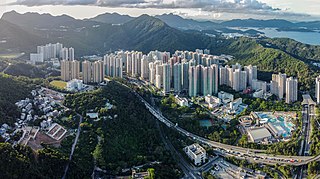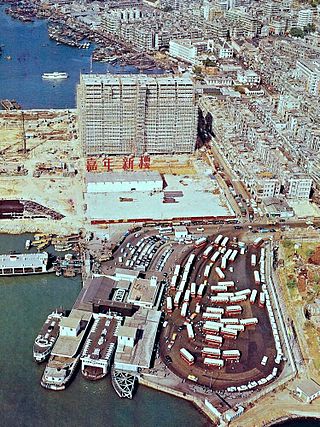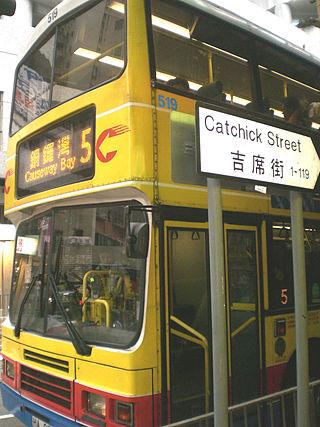
Hong Kong has a highly developed and sophisticated transport network, encompassing both public and private transport. Based on Hong Kong Government's Travel Characteristics Survey, over 90% of daily journeys are on public transport, the highest rate in the world. However, in 2014 the Transport Advisory Committee, which advises the Government on transportation issues, issued a report on the much-worsened congestion problem in Hong Kong and pointed at the excessive growth of private cars during the past 10–15 years.

Citybus Limited is a bus company which provides both franchised and non-franchised service in Hong Kong. The franchised route network serves Hong Kong Island, cross-harbour routes, North Lantau, Hong Kong International Airport, Kowloon, New Territories, Shenzhen Bay Port and Hong Kong–Zhuhai–Macau Bridge Hong Kong Port. The non-franchised routes serve mainly City One Sha Tin. It also provides bus rental services and staff bus services for some large companies such as TVB and China Light and Power.

The China Motor Bus Company, Limited, often abbreviated as CMB, is a property developer in Hong Kong. Before its franchise lapsed in 1998, it was the first motor bus operator in Hong Kong, and was responsible for the introduction of double-decker buses to Hong Kong Island.

Po Lam is a neighbourhood in northern Tseung Kwan O, Kowloon. An MTR station with the same name, Tseung Kwan O Village, Yau Yue Wan Village, King Lam Estate, and Po Lam Estate are located there.

Aberdeen Tunnel, part of Route 1, is a two-tube tunnel linking Happy Valley and Wong Chuk Hang near Aberdeen on the Hong Kong Island, Hong Kong. It shortens the travel time between Wong Chuk Hang and Causeway Bay of the Hong Kong Island. It connects the Wong Chuk Hang Road and Canal Road Flyover in the Hong Kong Island. The toll plaza is at the Wong Chuk Hang end.

Braemar Hill is a hill with a height of 200 metres (660 ft) south of Braemar Point on Hong Kong Island, Hong Kong. The hill was likely named after the Scottish village of Braemar by British officials.

Jordan Road Ferry Pier or Ferry Point (1924–1998) is a demolished pier originally located at Jordan Road, Jordan, Hong Kong.

KMB Route 1 is a bus route operated in Kowloon, Hong Kong. It is run by Kowloon Motor Bus and connects the Star Ferry Pier and Chuk Yuen Estate in Wong Tai Sin. The bus runs via Tsim Sha Tsui, Yau Ma Tei, Mong Kok, Kowloon City and Lok Fu.
Articles related to Hong Kong include:

Citybus Route 13 on Hong Kong Island is a bus service operated by Citybus, between Admiralty and Kotewall Road, Mid Levels.

Citybus Route 1 is a bus route operated by Citybus (CTB) on Hong Kong Island, running between Felix Villas and Happy Valley (Upper) via Kennedy Town, Sheung Wan, Central and Wan Chai.

Route 2 on Hong Kong Island is a bus service operated by Citybus, between Grand Promenade, Sai Wan Ho and Central Bus Terminus, Sheung Wan.

Route 8 on Hong Kong Island is an express bus service operated by Citybus, between Exhibition Centre station and Heng Fa Chuen.

Route 3B is a cancelled bus route operated by Citybus, between Pokfield Road Bus Terminus and Central via Mid-Levels. Before 1997, the number of the route was numbered 3.

Route 5 is a cancelled bus route on Hong Kong Island operated by Citybus, between Felix Villas (摩星嶺) and Causeway Bay (銅鑼灣威非路道).

Rickshaw Sightseeing Bus is a brand of sightseeing transportation service operated by Citybus, one of the franchised bus services operators in Hong Kong. It was operated by New World First Bus Services Limited (NWFB) before it was merged into Citybus on 1 July 2023. Using "rickshaw", an old Hong Kong icon, as a trademark, it offers a thematic sightseeing route by open-top sightseeing buses decorated under the rickshaw concept. It aims to facilitate visitors to explore local culture and diverse attractions of Hong Kong.
The history of the South Island line and West Island line encompasses a number of proposals which were made for extending the Hong Kong MTR metro system to the south and west of Hong Kong Island, which were not serviced by any rail transport before 2014. The West Island line opened as an extension of the Island line on 28 December 2014. The South Island line has completed construction and commenced service on 28 December 2016. The proposed South Island line (West) is still in the planning phase and is expected to begin in 2021.

















